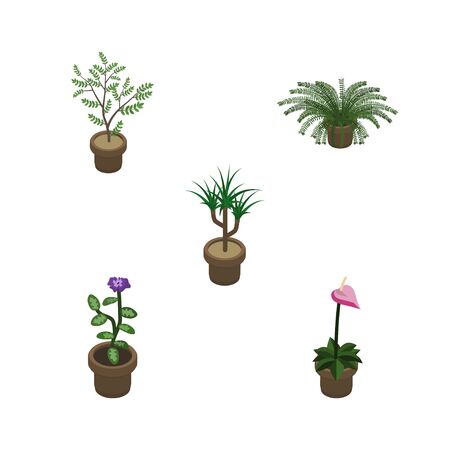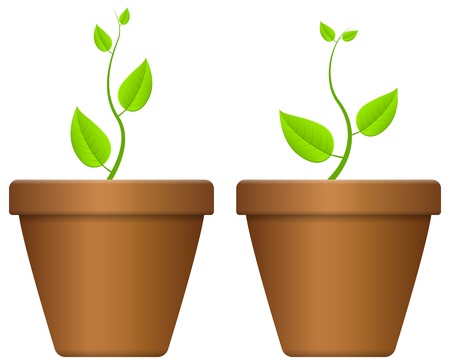Introduction to Ecological Gardening
Ecological gardening is more than just a trend—its a mindful approach to landscaping that supports the health and resilience of local ecosystems. In the United States, where diverse climates and native plant communities shape our natural heritage, ecological gardening seeks to work in harmony with nature rather than against it. By focusing on plant choices that contribute positively to their surroundings, gardeners can help maintain biodiversity, foster wildlife habitats, and conserve valuable resources. This practice involves understanding the crucial differences between native and invasive plants, as well as learning how these choices impact soil health, water usage, and pollinator support. For beginners, grasping these foundational concepts is key to creating outdoor spaces that are not only beautiful but also beneficial for both people and the planet.
2. Defining Native and Invasive Plants
Understanding the difference between native and invasive plants is essential for anyone interested in ecological gardening in the United States. These terms not only guide your plant choices but also shape the health and beauty of your landscape.
What Are Native Plants?
Native plants are species that have evolved naturally in a specific region over thousands of years. They form intricate relationships with local wildlife, soils, and climate. Because they are adapted to their environment, natives require less water, fertilizer, and maintenance once established. For example:
| Region | Examples of Native Plants |
|---|---|
| Northeast | Eastern Red Columbine (Aquilegia canadensis) New England Aster (Symphyotrichum novae-angliae) |
| Southeast | Purple Coneflower (Echinacea purpurea) Southern Magnolia (Magnolia grandiflora) |
| Midwest | Prairie Dropseed (Sporobolus heterolepis) Big Bluestem (Andropogon gerardii) |
| West Coast | California Poppy (Eschscholzia californica) Coast Live Oak (Quercus agrifolia) |
What Are Invasive Plants?
Invasive plants are non-native species introduced—often accidentally or for ornamental purposes—that spread aggressively, outcompeting local flora. Their unchecked growth can disrupt ecosystems, reduce biodiversity, and even damage property. Unlike natives, invasives often lack natural predators or controls in their new environment.
Common Invasive Species by Region
| Region | Examples of Invasive Plants |
|---|---|
| Northeast & Midwest | Japanese Knotweed (Fallopia japonica) Purple Loosestrife (Lythrum salicaria) |
| Southeast | Kudzu (Pueraria montana var. lobata) Chinese Privet (Ligustrum sinense) |
| West Coast & Southwest | Tamarisk/Saltcedar (Tamarix spp.) Ivy (English Ivy – Hedera helix) |
The Big Picture: Why It Matters
Selecting native plants supports pollinators, birds, and beneficial insects while helping to maintain the ecological balance of American landscapes. On the other hand, avoiding invasives protects natural habitats and ensures your garden contributes positively to your community’s green spaces.

3. Why Native Plants Matter
Native plants are the quiet heroes of American gardens, offering a tapestry of benefits that go far beyond their beauty. Rooted in local landscapes for centuries, these species have evolved to thrive in our unique climates and soils.
Supporting Local Wildlife
One of the most profound advantages of native plants is their role as vital lifelines for wildlife. Birds, butterflies, and countless pollinators rely on native flora for food, shelter, and nesting sites. From the bright blossoms of purple coneflower attracting monarchs to the acorns of white oaks nourishing songbirds, planting natives helps sustain the intricate web of life that defines our regional ecosystems.
Boosting Pollinator Populations
Bees, butterflies, and hummingbirds are essential players in ecological gardening. Native plants provide these pollinators with nectar and pollen sources perfectly matched to their needs—often more so than exotic alternatives. By cultivating milkweed for monarchs or bee balm for native bees, gardeners can create vibrant sanctuaries that bolster declining pollinator populations across America.
Improving Soil Health
Native plants do wonders below the surface too. With deep, resilient root systems, they enrich soil structure, increase water infiltration, and reduce erosion. Unlike many invasive species that can deplete or destabilize soils, natives actually improve fertility and help maintain the health of your garden’s foundation.
Cultivating Sustainable Beauty
The aesthetic value of native plantings is undeniable. Their colors and forms echo the rhythms of the American landscape—from prairie wildflowers to woodland ferns—creating gardens that feel both authentic and inspiring. Plus, because they’re adapted to local conditions, native plants generally require less water, fertilizer, and maintenance than non-native species. This makes them a cornerstone of sustainable landscaping: beautiful spaces that honor nature while conserving resources for future generations.
4. The Impact of Invasive Plants
When we look at the lush tapestry of a garden or local landscape, it’s easy to overlook the silent threat posed by invasive plant species. While some non-native plants may appear harmless or even beautiful, invasive plants can have far-reaching negative effects on ecological balance, biodiversity, and the health of native plant communities.
Ecological Risks of Invasive Plants
Invasive species thrive outside their native range, often outcompeting local flora for resources such as sunlight, water, and soil nutrients. Because they typically lack natural predators or diseases in their new environment, invasives can spread aggressively and disrupt established ecosystems. This leads to reduced habitat quality for native wildlife and alters important ecological processes such as pollination, nutrient cycling, and soil stabilization.
Key Challenges Posed by Invasive Plants
| Ecological Challenge | Description | Example |
|---|---|---|
| Biodiversity Loss | Displacement of native species reduces plant and animal diversity. | Kudzu overtaking native trees in the Southeast US |
| Ecosystem Imbalance | Disrupts food webs and natural relationships among species. | Garlic mustard impacting native understory plants in forests |
| Soil & Water Changes | Alters soil composition and hydrology, affecting overall garden health. | Purple loosestrife changing wetland water flow patterns |
| Management Costs | Significant time and resources are needed to control invasives. | Tamarisk removal efforts along southwestern rivers |
Cultural Context: Why It Matters in American Gardens
In the United States, gardening with an awareness of invasive species is not just about aesthetics—it’s a way to honor regional heritage and ecological integrity. Responsible gardeners take pride in protecting local habitats from these threats. By understanding the risks associated with invasives, we make informed choices that foster resilient gardens and vibrant communities for generations to come.
5. Recognizing Common Native and Invasive Plants
For anyone starting their journey into ecological gardening, learning to identify both native and invasive plants is essential. American gardens host a wide variety of species, some of which contribute positively to the local ecosystem, while others may threaten its balance.
Common Native Plants in American Gardens
Native plants are those that have naturally evolved in a specific region, supporting local wildlife and requiring less maintenance. Some classic examples include:
Eastern Red Columbine (Aquilegia canadensis)
This delicate wildflower, with its nodding red and yellow blooms, attracts hummingbirds and thrives in partial shade.
Black-Eyed Susan (Rudbeckia hirta)
A cheerful perennial, instantly recognizable by its golden-yellow petals and dark brown centers. It’s drought-tolerant and beloved by pollinators.
Little Bluestem (Schizachyrium scoparium)
This ornamental grass provides habitat for butterflies and birds. Its silvery-blue summer blades turn coppery-orange in fall, adding year-round interest.
Common Invasive Plants to Watch For
Invasive species often spread aggressively, outcompeting natives and disrupting garden ecosystems. Beginners should keep an eye out for these culprits:
Japanese Knotweed (Fallopia japonica)
This fast-growing plant forms dense thickets, crowding out natives and proving incredibly difficult to remove once established.
English Ivy (Hedera helix)
Though popular as groundcover, this vine can choke trees and smother native understory plants if left unchecked.
Purple Loosestrife (Lythrum salicaria)
With its showy magenta spikes, purple loosestrife invades wetlands, reducing biodiversity and altering water flow patterns.
Practical Tips for Identification
If you’re unsure about a plant’s status, use regional field guides or consult your local cooperative extension office. Observing leaf shape, flower color, growth habits, and even root structure can all aid in identification. By familiarizing yourself with both native treasures and invasive threats, you’ll be better equipped to cultivate a resilient and ecologically vibrant garden.
6. Tips for Cultivating a Native Garden
Creating a thriving native garden is both an art and a journey toward sustainability. By choosing plants indigenous to your region, you not only celebrate the local landscape but also contribute to ecological balance. Here are some practical guidelines to help beginners grow a beautiful, eco-friendly garden rooted in native plantings.
Choose the Right Native Plants
Begin with research—connect with your local extension office, botanical gardens, or native plant societies to identify species well-suited to your area’s climate and soil. Look for plants that naturally occur in your state or region; they’re more likely to flourish with less intervention. Consider mixing perennials, grasses, shrubs, and wildflowers for diverse textures and year-round visual interest.
Prepare the Soil Thoughtfully
Native plants often thrive in unamended soils, reflecting the conditions of their natural habitats. Remove invasive weeds and turf grass before planting, but avoid over-fertilizing or excessively altering the soil. If necessary, enrich depleted areas with compost rather than synthetic fertilizers to maintain organic health and resilience.
Plant with Purpose
Arrange your chosen natives by mimicking natural groupings—cluster similar species together for greater impact and easier maintenance. Pay attention to sun exposure, drainage patterns, and mature plant sizes. Fall is often the best time to plant natives in many American regions, giving roots a head start before summer heat arrives.
Cultivate Mindfully
Once established, native gardens require less water and fewer chemicals than traditional lawns or exotic plant beds. Water new plants regularly until they root deeply; afterward, rely on rainfall whenever possible. Mulch with leaf litter or shredded bark to suppress weeds and retain moisture while supporting beneficial insects.
Encourage Wildlife & Ongoing Stewardship
A native garden is a living ecosystem—invite pollinators by including nectar-rich flowers and provide shelter for birds with berry-producing shrubs. Monitor your garden for signs of invasive species and remove them promptly. Over time, embrace the seasonal ebb and flow: allow seed heads to remain as winter food sources, and appreciate the beauty of each phase in your evolving landscape.
By thoughtfully selecting, planting, and nurturing native species, you’ll foster an environment that supports local wildlife, conserves resources, and offers enduring natural beauty—a true reflection of ecological gardening values.

